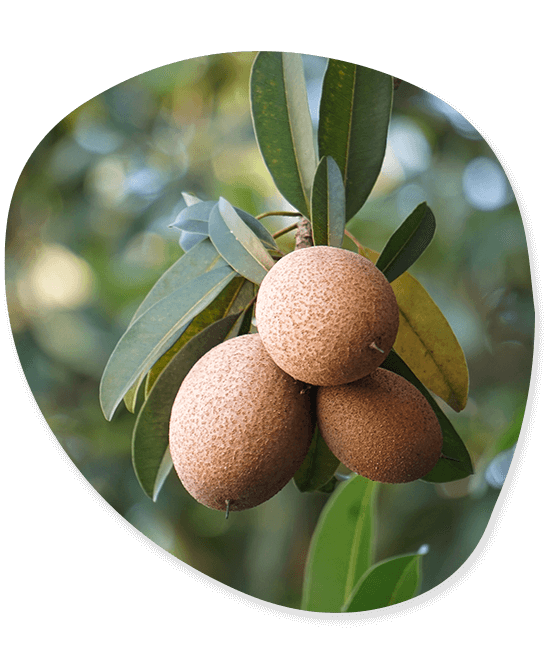Sapota
Long-lived, evergreen Manilkara zapota trees are indigenous to southern Mexico, Central America, and the Caribbean. They go by the common names chikoo and sapota. Tonnes of fruits are exported by the Indian sapota exporter every year. The Sapota export from India has been rising over time due to the different uses and advantages of the fruits. For local farmers and traders looking to grow their businesses and access the global market, the export of sapota from India is a fantastic opportunity.

Nutrients:
- Calories – 83 calories
- Dietary Fiber – 5 g
- Total Carbohydrate – 20 g
Vitamins:
Minerals:
Protein:
Pre-Shipment Inspection:
Standard Packing:
- We provide packaging in terms of 5, 10, 20, 25, 50 and 100kg also, as per the customers’ (country) requirement.
SAPOTA VARIETIES WE EXPORT
The Indian exporter of sapota sells a wide range of sapota products, including kalipatti, cricket balls, CO.1, CO.2, and other kinds. The goods that are exported from India should be of the highest calibre and adhere to all health and safety regulations. The following are the main types of sapota that India exports.

KALIPATTI
Sapota of the Kalipatti kind is mostly grown in Maharashtra, Gujarat, and North Karnataka. This type of plant features oblong fruits and broad, thick leaves. This variety produces 350–400 fruits per tree on average.

CRICKET BALL
Typically, the states of Tamil Nadu, Karnataka, Maharashtra, West Bengal, and Andhra Pradesh are where the Cricket Ball kind of sapota is produced. This variety produces large, rounded, delicious fruits with granular pulp.

CO.1
Tamil Nadu is where this kind of sapota is grown. A hybrid variant called CO.1 was created by crossing the oval and cricket ball varieties. In around 4 years, the variety begins to bear fruit. These variety’s fruits are big, oblong, delicious, and fleshy.

CO.2
Tamil Nadu is where this kind of sapota is grown. This type often has medium-sized trees with oval fruits. The CO.2 fruits typically weigh between 125 and 150 g and have a TSS of 23%.

PKM.1
In Tamil Nadu, the PKM.1 variety of sapota is well-known. This variety’s fruits are utilised in cooking and baking. This variety produces medium-sized, highly sugared fruits. PKM.1 typically weighs 80 g, and TSS is 23%.

PILIPATTI
Sapota of the Pilipatti type is grown in Gujarat and Maharashtra. One of the Sapota kinds that is exported to many nations is this one. This variety’s fruit weighs between 400 and 500 g.

PALA
Andhra Pradesh and Tamil Nadu are often home to the Pala species of sapota. It is a Sapota cultivar with a high yield. These fruits have excellent flavour, thin skin, and an oval or egg-shaped shape.

CO.3
The CO.3 strain originates in Tamil Nadu. Essentially, it is a cross between a cricket ball and a vavivalasa. From the fourth year on, this cultivar begins to bear fruit. This variety’s fruits are typically oblong in shape, light brown in colour, and sweet tasting. Around 157 kg of fruits are typically produced annually per tree.
One of the top sapota exporters from India is Vachhani Impex. We at Vachhani Impex have a wealth of experience and intimate knowledge of the food export business. We help our clients through every step of the process, including identifying buyers, thoroughly researching the market, performing quality checks, and so on. Contact Vachhani right away if you’re seeking for Sapota import from India!
